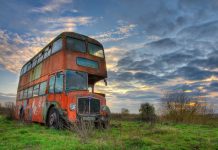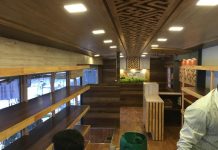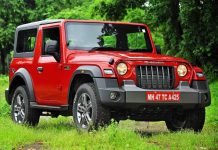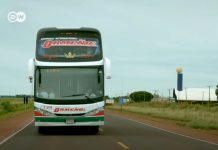The transport system of Kolkata is a mix of modern mass rapid transport and the old transport modalities like the rickshaws. Kolkata is connected to the rest of India by the National Highways, the extensive network of the Indian Railways, and also by air. Most traffic to North-East India routes via Kolkata.
Kolkata has an extensive network of government run and privately run buses. The ticketing system is not centralized one and one has to purchase separate tickets for buses, metros, trams and trains.
Images of Old Model Retro Buses in Kolkata Town
 The bus tickets are simple paper tickets purchased from the bus conductor after you board the bus. Also there are multiple organisations running buses, a private organisation, and multiple government services like CSTC (Calcutta State Transport Corporation), CTC (Calcutta Tramways Company), WBSTC (West Bengal Surface Transport Corporation) etc. There are also various types of privately run buses.
The bus tickets are simple paper tickets purchased from the bus conductor after you board the bus. Also there are multiple organisations running buses, a private organisation, and multiple government services like CSTC (Calcutta State Transport Corporation), CTC (Calcutta Tramways Company), WBSTC (West Bengal Surface Transport Corporation) etc. There are also various types of privately run buses.
The private-owned buses are quite typical of Kolkata. The private-owned buses are of two types, the regular ones and the mini-buses. The regular buses are coloured light-blue and yellow. The mini-buses are of brown and yellow colour, and contain lesser number of seats.

The mini-buses were started in the late seventies as a relief for the office commuters from the overloaded buses by being a sitting-only service, but this has given way to severely overloaded and crowded mini buses (and other buses too), largely due to the massive population of Kolkata.

The government-run buses are run by several authorities like Calcutta State Transport Corporation (CSTC), South Bengal State Transport Corporation (SBSTC), North Bengal State Transport Corporation (NBSTC), West Bengal Surface Transport Corporation (WBSTC) and the Calcutta Tramways Company (CTC). Government buses have no colour code and can be identified only by the appropriate symbol (CSTC or CTC or WBSTC) on their body.

Usually these buses are either bigger buses (CSTC, CTC & NBSTC) or smaller white buses (WBSTC & SBSTC). Both the name of the place where the bus is going to, as well as the name of the place where its route originated is mentioned on the bus, which makes it easy to identify the source and destination of the bus. On the Route Board of the Private/Mini Buses, the ply through (via) stoppages are also mentioned.

Recently larger & longer buses have been introduced under Jawaharlal Nehru National Urban Renewal Mission (JNNURM). These buses are superior and they have LED display boards which show the route, source & destination and also the popular bus stops.

Further, usually the conductor will call out the names of the stops to come at each halt, so boarding the right bus is not much of a trouble. If in doubt the conductor or any fellow passenger will help out. The buses will often stop to pick up a passenger who waves at the bus.

Recently air-conditioned buses have been introduced by the WBSTC & CSTC. Under Jawaharlal Nehru National Urban Renewal Mission (JNNURM) these buses have been included as a part of travel comfort to commuters.

Air-conditioned buses are operated by WBSTC (West Bengal Surface Transport Corporation) directly & through outsourcing. These buses are served by Tata Marcopolo Buses and Volvo Low Floor Buses. These buses connects places like the Airport, Barasat, New Town, Rajarhat, Salt Lake Sector-V, Howrah station, Santragachchi (a station on the Howrah-Kharagpur railway line) and Kudghat, Tollygunge.

The road network in Kolkata is vast. Air conditioned buses have also been launched as of July 2014 by CSTC on 28 different routes across the city and suburbs. They are in blue and white livery and is a complete fleet of Volvo 8400 model & Ashok Leyland AC JanBus, bought under JNNURM sheme. There is also an air conditioned bus being operated by CTC.

Around 450 JanBus, world’s first, has been launched from 30 July 2014. These buses have been manufactured by Ashok Leyland.

Long distance buses starting from Kolkata to various places like Bakkhali, Digha, Siliguri and other cities originate from the central bus depot at Dharmatala (popularly known as Esplanade) and Howrah bus stand. The tickets can be purchased on spot from the counters, online ticket booking websites or from the conductor on the bus.

Howrah Bridge and Vidyasagar Setu are two bridges connecting Kolkata with Howrah over the Ganges. Vivekananda Setu is the third bridge over the river at the northern reach of the city near Dakshineshwar from Howrah. The fourth one and the newest one is Nivedita Setu. Since Kolkata suffers from traffic congestion like other Indian cities, a network of expressways like Kona Expressway and Belghoria Expressway, flyovers and widening of southern stretch of Eastern Metropolitan Bypass are being created to ease up road traffic.

Kolkata is connected to other parts of India by the National Highways 2, 6, 34 and 117. The Belghoria Expressway connects NH 34 with NH 2 and 6 via the Nivedita Setu while the NH 117 is connected to NH 6 by the Kona Expressway via the Vidyasagar Setu.

Besides all this mode of transport, like in other Indian cities, walking is very common way to commute between the workplace and nearest railway station or bus stop. Privately owned cars, though less in number and usage compared to other large cities in India, are growing by leaps and bounds and are slowly becoming the transport of choice for a large number of people being helped by the growing economy, higher per capita income and the easy availability of loans from financial institutions.



















